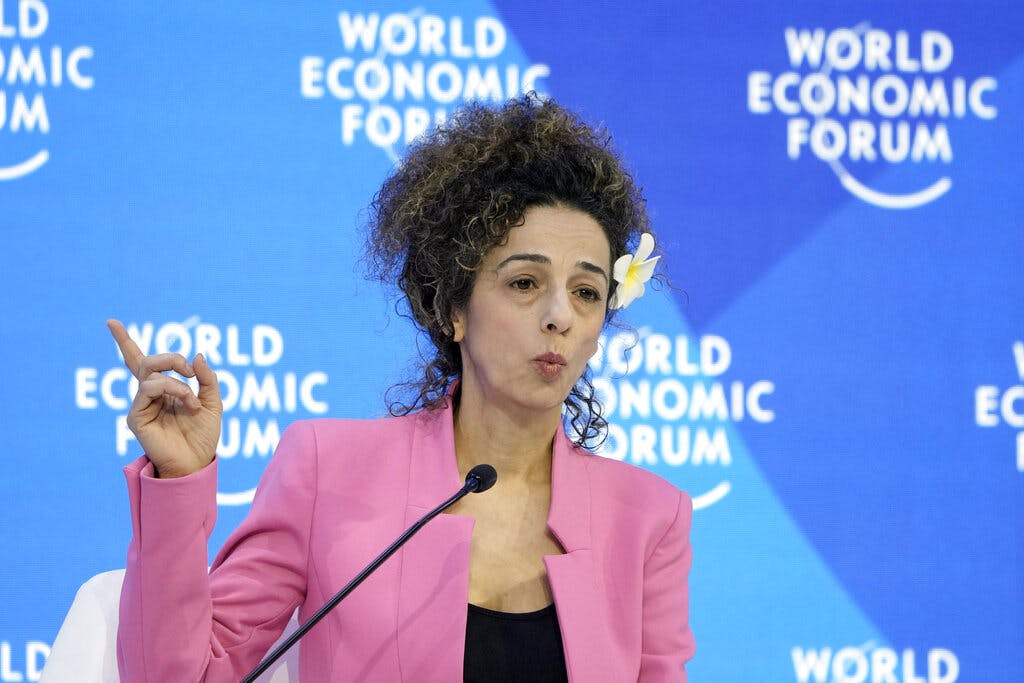Tehran Compared to Taliban as Iranian Schoolgirls Targeted by Gas Attacks
‘This is payback for the girls who are protesting against the compulsory hijab,’ an exiled champion of women’s rights in Iran, Masih Alinejad, tells the Sun. ‘We need an outside organization to investigate this biological attack.’

As if the Iranian currency’s loss of value was not enough amid the extended anti-regime protests, the Islamic Republic seems at a loss when it comes to handling a new crisis: Taliban-like chemical or biological attacks on schoolgirls across the country.
Authorities are looking into mysterious school poisoning cases in several cities. “At least 650 girls have been poisoned by toxic gas in Iran since November in what many believe is a deliberate attempt to force their schools to shut,” the BBC reports under a headline claiming the regime is “investigating” the phenomenon.
“We don’t trust them to investigate properly,” an exiled champion of women’s rights in Iran who has applauded protests against mandatory head covering, Masih Alinejad, tells the Sun. “This is payback for the girls who are protesting against the compulsory hijab. We need an outside organization to investigate this biological attack.”
The Islamic Republic is “following in the footsteps of the Taliban,” Ms. Alinejad adds. “They don’t want to admit publicly that girls are not allowed to go to school, so they don’t want to make an official announcement. But they’re using terror tactics to scare girls from attending schools.”
The phenomenon was first recorded in November, when several teenage girls were rushed to a hospital after a smoking object was thrown into their schoolyard at Qom, the city that houses the country’s religious Shiite institutions. Since then, similar cases have been seen at schools around the country, where girls seem to have been targeted.
Some witnesses described the apparent smoke bomb as smelling like tangerine or mint. Others said it smelled more like bleach or rotten fish. “With the data that’s available, the most probable cause of this poisoning could be a weak organophosphate agent,” an unidentified doctor who specializes in treating poison victims told the Guardian.
“If some of the poisoned pupils show a sign of severe sweating, excess salivation, vomiting, intestinal hypermotility, and diarrhea, then the attack was done using this agent,” the doctor added. The motive of the poisoning, he posited, was to “scare the protesters by using extremist groups inside and outside the country.”
Outraged parents are accusing regime factions of backing gangs of religious zealots, which are widely believed to have perpetrated the attacks. “There is a history of the regime having relations with these kinds of loosely affiliated groups to maintain deniability,” the policy director at United Against Nuclear Iran, Jason Brodsky, tells the Sun.
As reports on the poisoning incidents grew in Farsi-language news outlets and angry comments dominated social media, top officials at Tehran seemed unable to settle on a unified response.
The chemical agents used in the attacks “are not military grade and are publicly available,” the regime’s deputy health minister, Younes Panahi, said in a Qom news conference Sunday, calling for calm. Evidently, he added, “some people wanted all schools to be closed down.”
Yet, Mr. Panahi retracted that last statement on Monday, and denied that he had indicated that the attacks were premeditated. His about-face was widely seen as evidence that the regime is conflicted about ways to handle the emerging crisis.
The national police chief, Ahmad-Reza Radan, launched an official investigation. “Our priority is to find the origin of this case, and until then we will not judge whether it was intentional,” Mr. Radan told the regime-affiliated Tasnim news agency.
Mr. Radan, who was appointed police chief this year, is under Washington sanctions for his role in the brutal repression of several waves of anti-regime protests, including the current anti-hijab movement. “That Radan is leading the investigation tells you everything you need to know about it,” Mr. Brodsky said.
Beyond anger over oppressive rules like mandatory head coverings, Iranians are irate over widespread corruption among the ruling elites, government incompetence and waste, as well as what is seen as adventurism overseas while the home front is neglected.
Meanwhile, the Iranian rial has lost 20 percent of its value over the last few days, and more than 50 percent since the protests started following the September death of 22-year-old Mahsa Amini after she was detained by the so-called morality police. Economic hardships are one of the main causes for the growth of the protest movement — and vice versa.
“Persistent high inflation and widespread distrust in the government” are leading to an “avalanche of demand for foreign currency as a tool to hedge against inflation and the rial’s depreciation,” an adviser on Iran’s economy at the Foundation to Defend Democracies, Saeed Ghasseminejad, wrote over the weekend, explaining the dramatic drop in the country’s currency.
Most would agree that deploying weapons of mass destruction against female students is hardly a recipe for regaining the public trust and arresting the country’s economic slide.

